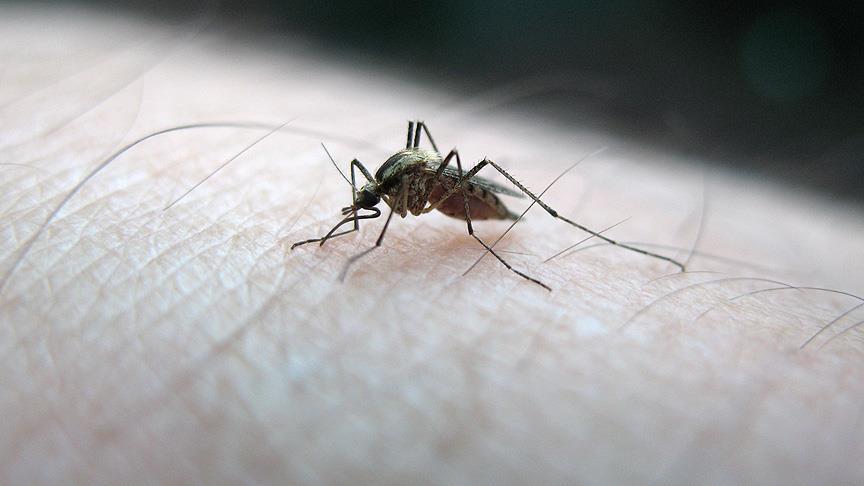Dams increase risk of malaria infections in Kenya
'Every morning when we wake up and head to the farm we are bitten by mosquitoes,' says a farmer who lives near a dam

Kenya
By Andrew Ross
NAIROBI, Kenya
A new study shows that dams in Sub-Saharan Africa contribute to over 1 million new Malaria cases annually, a disease that according to the World Health Organization (WHO) claims the lives of nearly 1 million people.
The study conducted by researchers from the International Water Management Institute (IWMI) correlates malaria infections with the location of dams in the sub-Saharan Africa region.
In Kenya, residents living near the Kamburu Dam located on the Tana River in the Eastern Province complain of increased malaria infections. The dam’s slow-moving water is said to be the perfect breeding ground for the Anopheles mosquito, which carries the malaria parasites.
“We are farmers; we don’t have any other means to make money apart from farming,” Stephen Mutisya, who owns a farm near the dam, told Anadolu Agency.
“Every morning when we wake up and head to the farm we are bitten by mosquitoes,” he lamented. “They are always there as if ready to ambush us, we always wear heavy socks when going to the farm, so that they don’t bite our legs. Some wear long-sleeved sweaters, but this doesn’t help”.
The 52-year old farmer told Anadolu Agency that his two farmhands have suffered from malaria more times than he can remember.
“The mosquitoes will find any exposed flesh and start biting. You come from the farm when your face is all swollen just from the bites, and my farmhands have been in and out of the hospital so many times because of the malaria that comes from this dam”.
Kenya’s main source of electricity is its 14 hydro-power plants, with the Kamburu Dam being one of the most productive hydroelectric power plants.
“We understand how important the dam is to us and to Kenya,” Mildred Mulonzi, also a farmer, told Anadolu Agency.
“But we are dying because of malaria, we are being weakened by malaria. The dam does provide water for irrigation for our farms, but I think whoever is responsible should ensure that we get proper medication. We are only safe while in our nets when we sleep,” Mulonzi said. “But when we wake up we are greeted by angry mosquitoes ready to bite us now that we can’t walk with our nets.”
Several attempts by the Anadolu Agency to get a comment on this story from the state-run Kenya Electricity Generating Company (KENGEN) went unanswered.
Local media previously reported that KENGEN clinical officer Peter Esekon had admitted to the company that he was aware of the problem affecting communities that live near the dams.
Last year, leaders from the West Pokot region vowed to sue KENGEN for failing to compensate thousands affected by mosquitoes following the construction of the Turkwel hydro-power plant, which contributes 10% of the electricity on the east African country’s national grid, Kenya’s Daily Nation website reported.
“They are only benefiting without the community around here. They generate power, get profit in Nairobi while the person on the ground is suffering. It’s up to them to do it (compensate the community) or we take them to court,” said Samuel Moroto, MP from Kenya’s Kapenguria region.
Back in the Eastern Province, Anadolu Agency spoke to Lucy Njeri, who works at a health center near the Kamburu Dam. She told Anadolu Agency that most of the patients received by the health facility suffer from malaria.
“I would say eight out every 10 cases are malaria related. The female anopheles mosquito is said to breed in the dam nearby, so there have been many malaria cases. We always advise our patients to sleep under a treated net, but these communities are poor and not all can afford a mosquito net which goes for around 1,000 Kenyan shillings (US$10).”
According to IWMI researchers, Kenya’s Kamburu Dam, Cameroon’s Bamendjin Dam, Ethiopia’s Koka reservoir, and the Gilgel Dam are among areas with reported increases in malaria cases due to the construction of dams.
The researchers say that dam-associated malaria could hamper sub-Saharan Africa’s determination to eliminate malaria.
They further recommend that power-generating companies should be on the forefront in the fight against malaria by providing treated mosquito nets and mosquito-proof houses to communities living near the dams.
Anadolu Agency website contains only a portion of the news stories offered to subscribers in the AA News Broadcasting System (HAS), and in summarized form. Please contact us for subscription options.

